One of the first questions we are always asked is “What is Lean?” It also happens to be one of my favorites to answer. Partially because I get legitimately excited when I talk about it.
Why, you may ask? Because, I truly believe in it. I have seen Lean do amazing things personally and professionally because it actually works. And it’s just in my nature to want to share it with others because it helps them.
In a nutshell, Lean is a business philosophy of continuous improvement.
But it goes far beyond that.
- There are proven tools, techniques, and methods that are used to produce the desired results.
- There is also a huge cultural aspect that incorporates respect for people throughout the rest of the practices.
- It extends into the management philosophy as well that proves necessary for the program as a whole to work.
So where did it come from?
Lean began from several sources that merged and evolved to become the program that it is today. It is important to know how they came about, so please ask us if you want to know more detail or have questions.
Part 1: It started in Japan: Toyota used to make textiles.
- They created a way to stop the fabric loom machines when the thread broke which created a signal for someone to come and fix the machine so production could continue.
- They made a way to address an error as soon as possible so they could maximize production with their machines and not waste time.
Part 2: Later, in the U.S., Henry Ford began mass producing cars in a revolutionary way with the production line and large economies of scale.
- He was looking for ways to simplify processes to they could easily be taught and repeated by anyone.
Part 3: After World War II, Japan was really hurting in their manufacturing sector and came to the U.S. to learn some techniques that could help their companies flourish.
- The U.S. Taught Toyota some concepts they knew that they took back and implemented.
- Fun Fact: The visitors from Toyota also learned a lot from our American supermarkets and their systems that varied greatly from the traditional markets they had in Japan.
- They saw small inventory sizes that were replenished regularly.
Part 4: Edward Deming went to Japan and taught them his methods that involved improvement techniques, measurements, and systems.
Part 5: Toyota combined what they learned and modified them all to fit their needs.
- They also incorporated regular input and ideas from their employees to make it even better until they became the leading car manufacturers in the world.
Part 6: The U.S. sent a team from MIT to Toyota to figure out what they were doing.
- They studied it, evaluated it, and decided to call it “Lean.”
Quick Plug/Info: Collaborative Impact’s Terri Lawrence was personally trained in Japan by those who originally created the Lean system at The Toyota Company. So this information is straight from the horse’s mouth.
The amazing thing with Lean is that they began to test it in other industries and found out that it works for anything with a process. It spread from just automobile manufacturing to any kind of manufacturing and then to other industries including healthcare, agriculture, government, and more!
There is obviously lengthy detail to go into, but these are the basics you need to understand what it is and how it could help you. I’ve never found something it doesn’t apply to or someone it can’t help.
What are some other things you want to know about Lean? Ask us questions below!
If you have stories to share or further questions, we would love to hear from you. Additionally, if you are sensing some issues in your improvement program, please contact us! We would love to help. We conduct assessments, give recommendations, and work with clients to get their initiatives back on track.
We are always trying to improve too; constructive feedback is always welcome. Please comment or email so I can respond back to any questions you may have. Feel free to email me any time at molly.thorvilson@collaborativeconsultants.com.
Thank you for reading!
Molly



